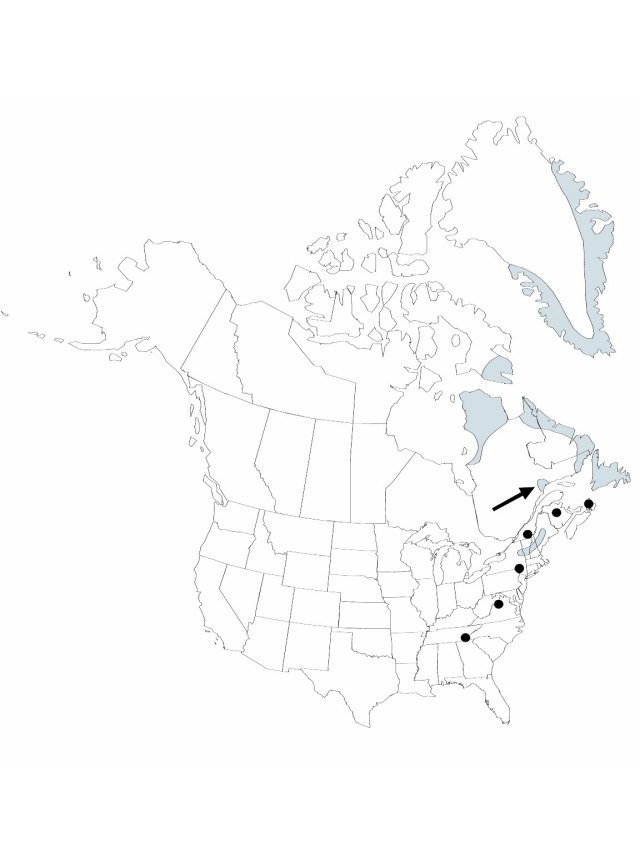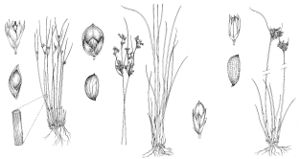Difference between revisions of "Juncus trifidus"
Sp. Pl. 1: 326. 1753.
imported>Volume Importer |
imported>Volume Importer |
||
| Line 65: | Line 65: | ||
|publication year=1753 | |publication year=1753 | ||
|special status=Illustrated | |special status=Illustrated | ||
| − | |source xml=https:// | + | |source xml=https://bitbucket.org/aafc-mbb/fna-data-curation/src/2e0870ddd59836b60bcf96646a41e87ea5a5943a/coarse_grained_fna_xml/V22/V22_116.xml |
|genus=Juncus | |genus=Juncus | ||
|subgenus=Juncus subg. Poiophylli | |subgenus=Juncus subg. Poiophylli | ||
Revision as of 20:29, 5 November 2020
Herbs, perennial, tufted, 1–4 dm. Rhizomes densely branching. Culms few to many, erect to drooping. Cataphylls 2–4. Leaves basal and cauline, 2–4; auricles deeply lacerate, to 4 mm, membranous; blade dark green, flat to slightly channeled, 5–12 cm × 0.5–1 mm, margins finely serrulate. Inflorescences 1–3(–4)-flowered; primary bract usually exceeding inflorescence. Flowers: bracteoles 2, usually lacerate; tepals brownish, widely lanceolate, 2.1–3 mm; inner series slightly shorter, apex acute; stamens 6, filaments 0.3–0.7 mm, anthers 1.2–1.5 mm; stigma 1.5–3 mm. Capsules brown, ellipsoid, 2.2–3.5 × 1.3–1.7 mm, longer than tepals. Seeds brown, obliquely ovoid, 0.89–1.35 mm, not tailed. 2n = 40.
Phenology: Flowering and fruiting late spring–early summer.
Habitat: Mostly in crevices of granitic (schistose) cliffs or rubble slopes in the higher regions of the Appalachians
Elevation: 20–2000 m
Distribution

Greenland, N.B., Nfld. and Labr., N.S., Que., Maine, N.H., N.Y., N.C., Tenn., Vt., Va., Europe, n Asia.
Discussion
Selected References
None.
